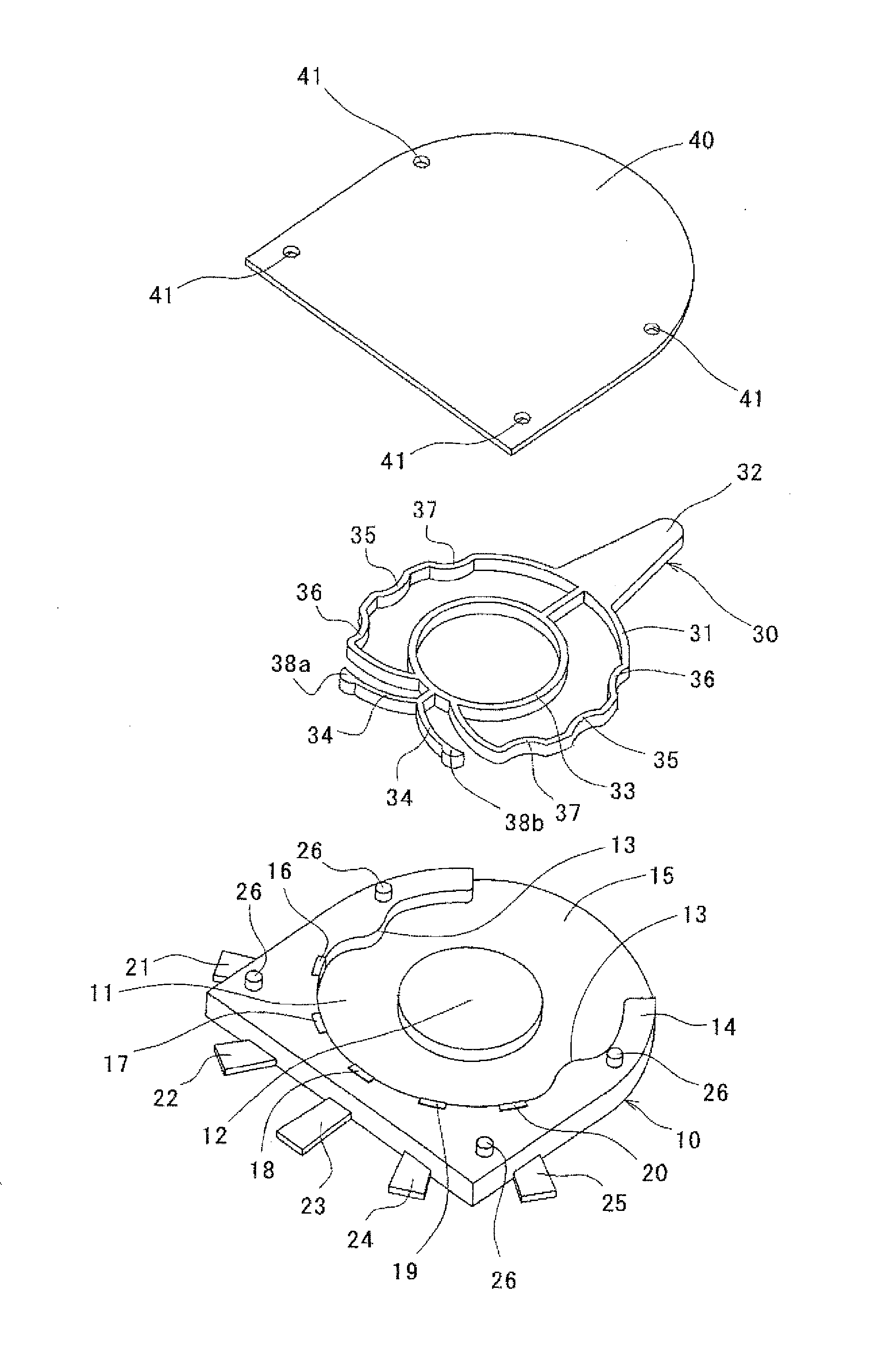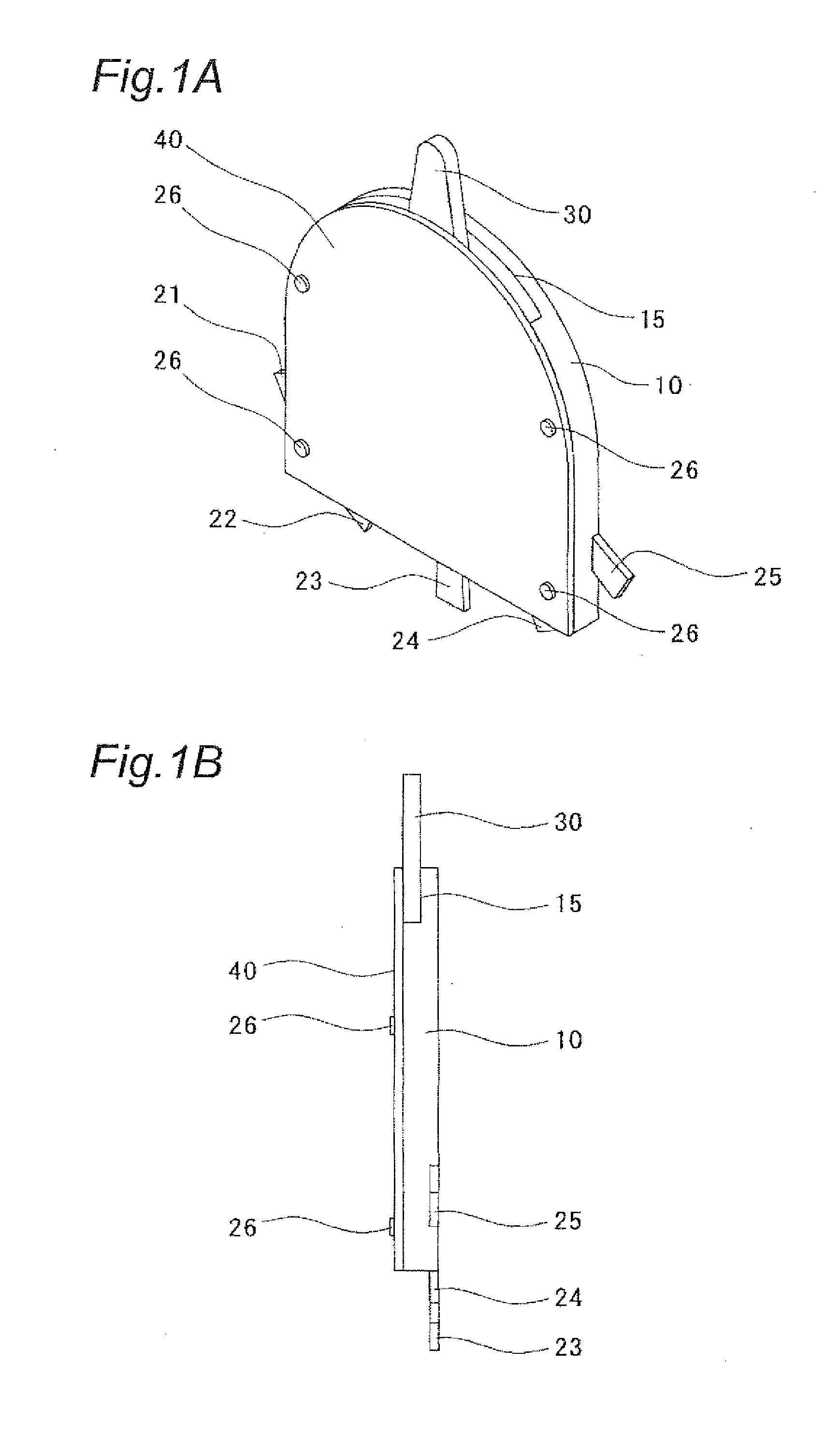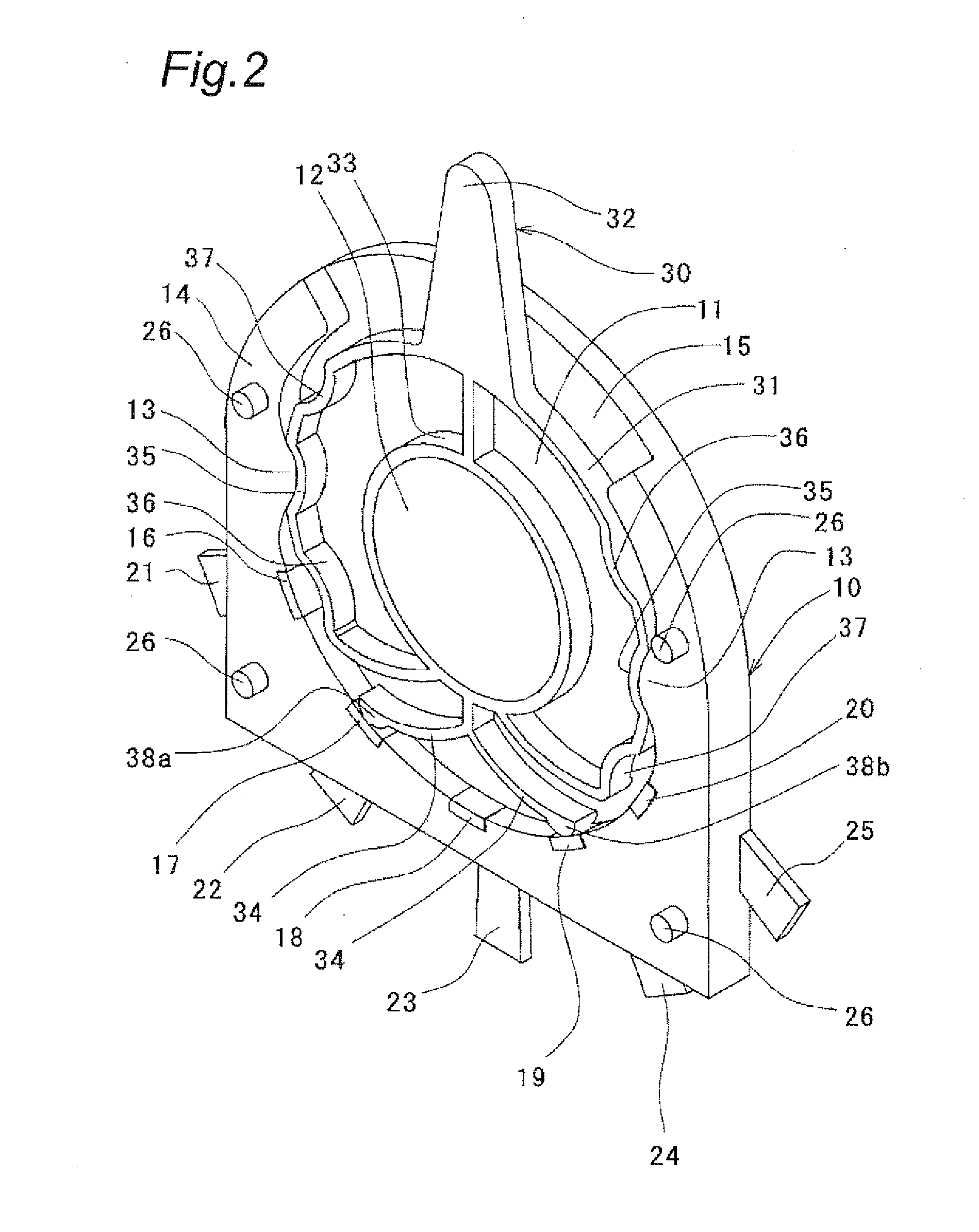Switch
a technology of switches and switches, applied in the field of switches, can solve the problems of increasing the thickness of the contact structure and the difficulty of reducing the thickness of the product, and achieve the effect of small switch size and thinner switch
- Summary
- Abstract
- Description
- Claims
- Application Information
AI Technical Summary
Benefits of technology
Problems solved by technology
Method used
Image
Examples
first embodiment
[0049]As illustrated in FIGS. 1A to 4B, the switch according to the first embodiment includes a base 10, an actuator 30, and a cover 40.
[0050]As illustrated in FIG. 3, the base 10 has a fitting recess (hereinafter, referred to as “recess”) 11 defined therein, in which the actuator 30 described below is fitted on its upper surface. The recess 11 has a shaft or boss 12 defined at its center for supporting an engaging portion 33 of actuator 30 described below. The opposing side surfaces defining in part the recess 11 have engagement concave portions 13 for engagement with associated engagement convex portions 35, 36, and 37 of the actuator 30 described below.
[0051]An outer peripheral wall 14 forming the recess 11 has an operational cutout or opening 15 defined by removing an upper part thereof indicated in FIGS. 1A and 1B. The opposite ends of the peripheral wall 14 are designed so that the arms 32 of the actuator 30 make contacts therewith when the switch takes the second and third po...
second embodiment
[0070]As illustrated in FIGS. 6A to 9B, the switch according to the second embodiment includes a base 50, an actuator 70, and a cover 90. The terminologies “up,”“down,”“left,” and “right” below are used for convenience in describing the switch with reference to the drawings, which does not intend to limit the arrangement of the switch.
[0071]As illustrated in FIG. 8, the base 50 has a substantially rectangular recess (hereinafter, referred to as “recess”) 51 defined thereon for accommodating the actuator 70 described below on the upper surface thereof, forming a peripheral wall defining thereinside the recess 51. The peripheral wall, which has a cutout or opening 52 defined at the center of one of its longitudinally extending portions, includes upper peripheral portions 53 positioned on either side of the operational opening 52, a lower peripheral portion 54 opposing the upper peripheral portions 53, and left and right peripheral portions 55 and 56 connecting between the upper and lo...
third embodiment
[0088]FIG. 10 illustrates a switch of the third embodiment of the present invention. This switch is substantially similar to the second embodiment, but it is different from that in that the actuator in the second position is maintained in its position while the actuator in the third position is automatically returned to the first position. In the third embodiment, like reference numerals designate like components in the second embodiment to the descriptions thereto will be omitted.
[0089]As illustrated in FIG. 10, the elastic engagement portion 73 of the switch has the narrowing portion 76, the second engagement recessed portion 77 on one side of the first engagement recessed portion 75, and an elastic inclined portion (elastic portion) 81 on the other side of the first engagement recessed portion 75. The elastic inclined portion 81 is formed like “S” inclined toward right. One end of the “S” shaped, elastic inclined portion is connected to the first engagement recessed portion 75, a...
PUM
 Login to View More
Login to View More Abstract
Description
Claims
Application Information
 Login to View More
Login to View More - R&D
- Intellectual Property
- Life Sciences
- Materials
- Tech Scout
- Unparalleled Data Quality
- Higher Quality Content
- 60% Fewer Hallucinations
Browse by: Latest US Patents, China's latest patents, Technical Efficacy Thesaurus, Application Domain, Technology Topic, Popular Technical Reports.
© 2025 PatSnap. All rights reserved.Legal|Privacy policy|Modern Slavery Act Transparency Statement|Sitemap|About US| Contact US: help@patsnap.com



